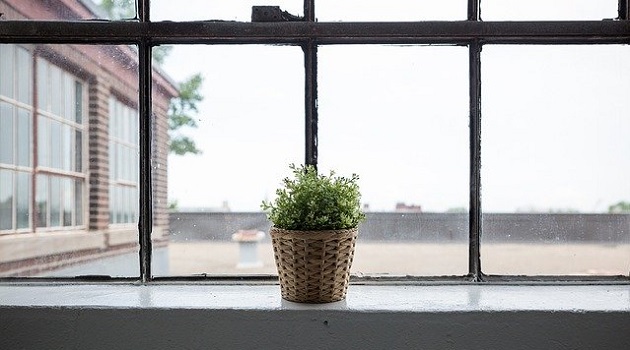By Mike DuBose
Unexpected severe weather can wreak havoc on homes, businesses, cars, and lives. We saw this firsthand a few years back when arctic blasts struck South Carolina’s Midlands with freezing temperatures, ice, sleet, strong winds, and snow. More than 30,000 homes were without power for 5+ days, and many went waterless when their pipes burst from the extreme cold.

“Never before have we seen so many homeowners unprepared for the cold temperatures,” said Kevin Meetze of Meetze Plumbing. Here are some simple tips to avoid weather-related headaches this season:
Know what’s coming. Check the Weather Channel’s ten-day forecasts regularly. Frigid temperatures can sneak up on you quickly with little warning!
Establish relationships with plumbing and heating/air conditioning businesses before you need them. These companies will turn their attention to loyal customers with maintenance service agreements first.
Obtain a backup cooking method. Buy a grill with 2-3 tanks of propane gas, and always keep a backup tank on hand. Gas fireplace logs, for example, not only look nice but can help heat a room if the power goes off and you’ll have an electricity-free way to prepare food!
If your home has a crawlspace, close the foundation vents during the winter months. This will help the area stay above the freezing point, reducing the chance of frozen pipes. You can also use cardboard or newspaper on the exterior to close them off. When warmer temperatures or spring arrives, open vents to allow the crawlspace to breathe.
Assess everything outside that can freeze during winter. Inexpensive spigot covers can be found at Lowe’s and are very easy to install, or you can wrap old towels around spigots and secure them with duct tape. Scott Moseley of Irmo Insurance said, “Don’t forget your pool and pump equipment, Jacuzzis, sprinkler systems, water hoses, and other outside items that may freeze.”
When temperatures drop into the twenties or below, leave water running at all indoor fixtures (hot and cold) that are adjacent to an outside wall. Don’t just drip—the stream should be roughly the size of a pencil, according to Kevin Meetze.
Prevent areas like wells from freezing. Run an extension cord with a mechanic’s light to keep the inside of the pump cover warm.
Keep all rooms located on the perimeter of the house at 60 degrees Fahrenheit or above. When temperatures drop, the outer walls of these rooms get very cold, and pipes within them can burst. If you have a gas tankless water heater, run a little less than half of a gallon of water per minute from your interior faucets on very cold nights so that the unit does not fire up but water is flowing through pipes to avoid freezing.
Locate the shutoff valve for your house’s city water supply. It can usually be found inside the water meter box close to the street. You will also need to obtain a tool (like locking pliers) that can turn the valve to an off position. That way, if the pipes freeze, you will be ready to turn off the water and avoid flooding! If a well is your water source, learn which electrical breaker controls the well’s pump.
Insulate water pipes to prevent them from bursting. Home improvement stores sell round foam tubes in different sizes with a split in the middle that you can simply snap over the pipes located in your crawlspace, attic, and other parts of your home.
Bring pets indoors when temperatures drop. If your pet absolutely cannot come inside, buy a dog or cat house of the appropriate size and equip it with an electrical heating pad (covered by a towel) set on low.
Maintain emergency supplies. When storms approach, you want to be ready with items such as a battery-powered radio, extra batteries, bottled water, firewood (if you have a wood-burning rather than gas fireplace), non-perishable foods, flashlights, candles, matches, and extra blankets. Also, if temperatures drop below freezing and you are concerned about losing access to water, fill your bathtubs and you will have water to flush the toilets or wash off.
Keep food safe during outages. When power goes out, avoid opening your refrigerator or freezer except for quick periods. Or, consider boxing up your food and setting it outside when temperatures are in the 30-40s.
Avoid damage from power surges. During power outages, unplug your expensive equipment and appliances. Also, all important appliances should be plugged into a good surge protector. You may want to consider heavy-duty backup batteries for computers that can also be used to power up cell phones during extended outages.
During storms, remove any snow or ice from the top of your heating and air equipment. Ice buildup can lead to unit failure.
Install a home generator. There are many options available to consumers. A small gasoline or propane-powered generator kept outside can keep lights and some appliances operating using long extension cords. For best results, consider a whole house generator that can power all your home appliances.
When necessary, contact an emergency cleaning company ASAP. If you experience flooding from broken water pipes, a fire, or other disastrous events, contact a reputable cleaning and restoration company like Duraclean immediately. Speed is essential, as others are probably experiencing the same issues and it’s generally “first come, first served.” According to Duraclean’s Chip Huggins, “All the disaster companies in the Midlands were not prepared for so many emergencies that occurred in 2014. It took us months to catch up from so many requests!”
At some point, we will all be faced with weather conditions that can disrupt or even make our lives miserable! However, with a little advanced effort, you can ensure that you and your family can survive or preferably, be comfortable, during extreme weather.



